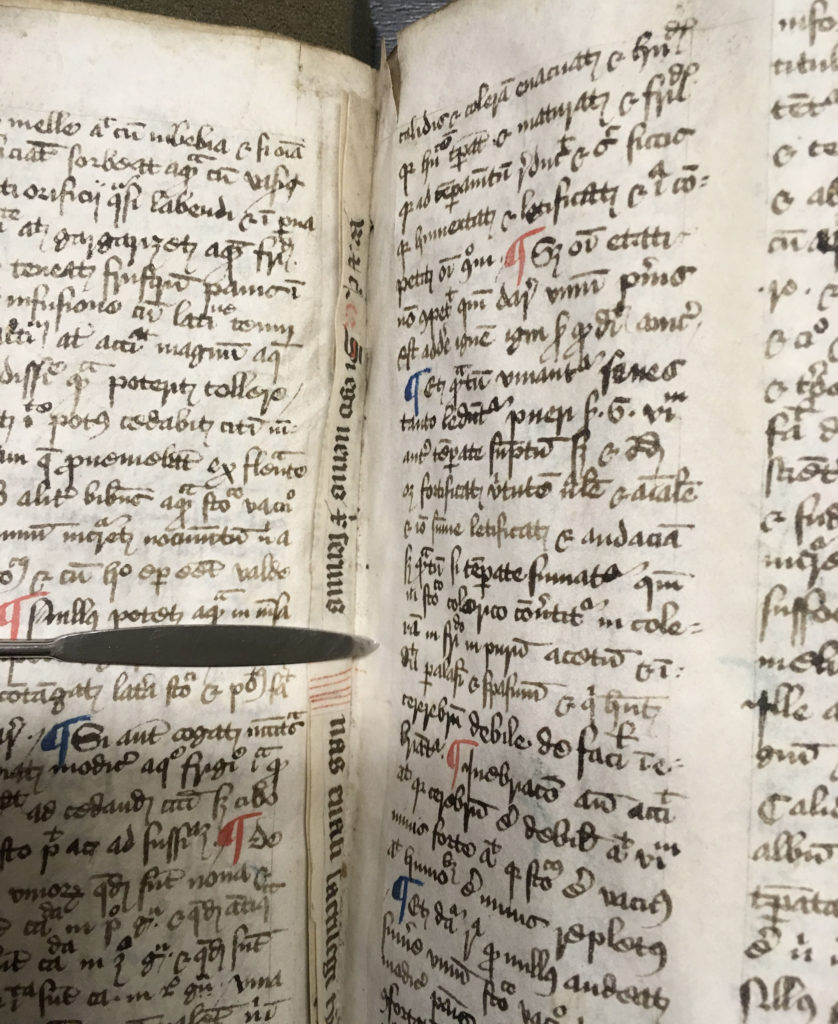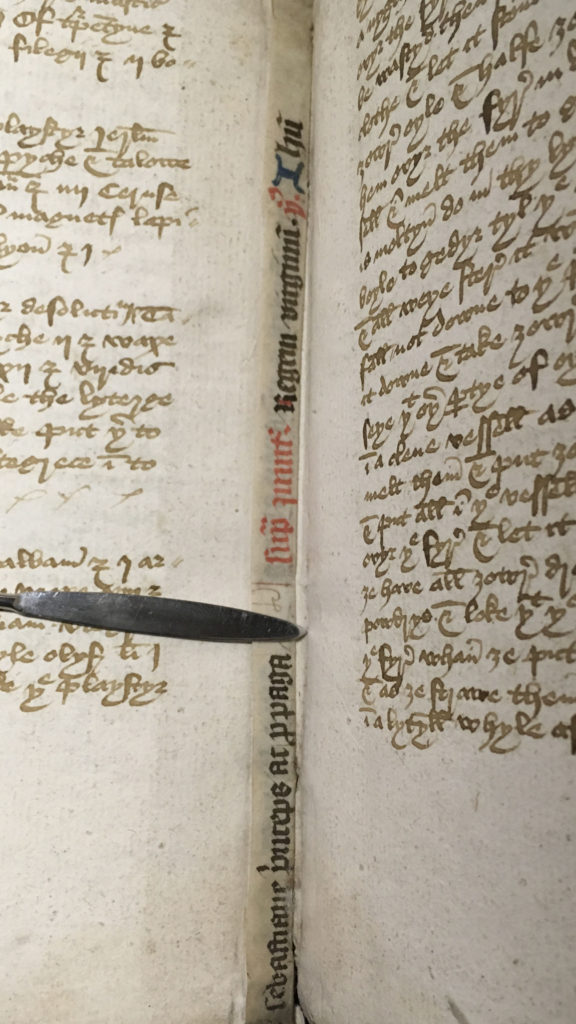Yes, Virginia, there is such a thing as ‘manuscript waste.’ To us, several hundred years later, it seems a horrible thing. However, it was common practice for early bookbinders to cut up and use pages from unwanted manuscripts as binding material. These pages were sturdy and were used for paste-downs, wrappers (covers), spine-linings, or gathering reinforcements. Not only did the practice essentially recycle texts that were outdated, damaged, or for some other reason, no longer used, it also gives us an opportunity to get a glimpse into the history of a specific text’s use. If we think about it, it’s not too much different than how we treat old newspapers today: as decoupage, potty-training mats for puppies, packing material, etc., etc., etc.
10a 215, which we ‘met’ last week, has some lovely examples of manuscript waste used as binding strips. Binding strips were used between quires (the ‘gatherings’ or ‘booklets’ of which a book is formed) in order to strengthen the binding. The first example in 10a 215 can be seen in last week’s photo and is an unidentified text.
However, the next few strips are identified, thanks to Peter Kidd’s work (his entire catalogue is available here). They are from a 15th-century English breviary (a service book containing the texts necessary for the celebration of the divine offices). The strips contain small parts of the feasts of Saints Fabian (January 20), Sebastian (January 20), and Agnes (January 21).



